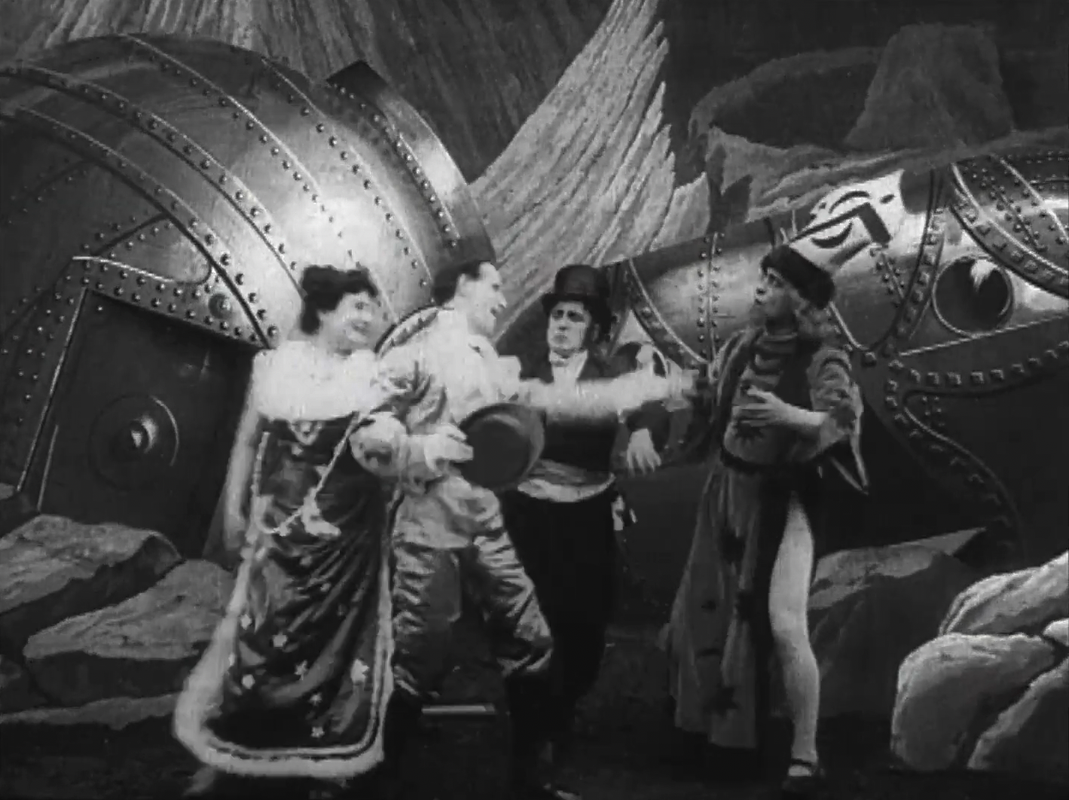“Laugh, my friends. Laugh with me, laugh for me, because I dream for you.”Le voyage dans la lune [A Trip to the Moon] (Georges Méliès, 1902)
Dec
19
Apollo 17
.gif)
A gif from the hand-coloured edition that is now in the Filmoteca de Catalunya. Poor Mister Moon has the adventures' rocket stuck in his eye. DPs: Théophile Michault & Lucien Tainguy.
The Moon (any moon) to commemorate the end of the final man-manned moon landing.
– Georges Méliès, 1937
In true Méliès style, a wild menagerie of showgirls and scientists meet on the Moon in this groundbreaking sci-fi spectacle.
moons
“Mars Daughter, You are fine. I am loving you and I should like very much to marry you.”Un matrimonio interplanetario [A Marriage in the Moon] (Enrico Novelli, 1910)
Sep
12
Луна 2 – 1959

Aldovin (director and author of La Colonia Lunare (1908) meets his lovely Martian fiancée halfway, on the Moon.
To commemorate the launch (not landing) of the Луна 2 aka the Second Soviet Cosmic Rocket on September 12, 1959, we present The Moon.
According to Wikipedia, Luna 2 was the first spacecraft to touch the surface of the Moon, and the first human-made object to make contact with another celestial body. Well, Enrico Novelli went there first…
– Aldovin, Terrestrial Astronomer (Aldovin's radiotelegraph to Mars), via
…and what an adventure he had! An Earth gentleman points his telescope at the red planet, only to spot a beautiful Martian princess. He promptly falls in love and lo and behold! it's mutual! That asks for an instantaneous wedding halfway, on the Moon, and nothing can stop them!
“I therefore concluded and decided unhesitatingly, that there are three stars in the heavens moving about Jupiter, as Venus and Mercury round the Sun; which at length was established as clear as daylight by numerous subsequent observations. These observations also established that there are not only three, but four, erratic sidereal bodies performing their revolutions round Jupiter… the revolutions are so swift that an observer may generally get differences of position every hour.”Operation Ganymed [Helden, verloren im Staub der Sterne] (Rainer Erler, 1977)
Jan
7
moons

Jupiter rising. DP: Wolfgang Grasshoff.
Moons for Galileo Galilei's observation of Jupiter's four largest moons in 1610: Ganymede and Callisto on January 7, and Europa and Io on January 8.
– Galileo Galilei, Sidereus Nuncius (”Starry Messenger”), 1610
A spacecraft named Ganymede II returns back to Earth after its expedition to Jupiter's moons followed by 1500 days stuck in space. The Earth they find, is deserted.
“You and I may dream of gold or grocery bills — but when a child slaps Morpheus on the back and says 'Hello, old man' — well it's a different story.”Moonland (William A. O'Connor, 1926)
Aug
15
Chant At The Moon Day

Mickey (Mickey McBan) and his dog looking up to the crescent moon from a perfectly round window with beaded curtains made of stars. Spot the Milky Way! DP: Edward Gheller.
A little boy and his dog are invited over by the Man in the Moon himself. The trip to the Moon is a big adventure for the drowsy duo and they meet peculiar flora, fauna and men along the way, lifted straight from the Great Moon Hoax.
– opening title card
Post-McCay's serial Little Nemo in Slumberland (1905) and pre-Fleming & Cukor's The Wizard of Oz (1939), William A. O'Connor is heavily indebted to both. Which doesn't make his short Art Deco-styled science fiction fantasy any less magical.